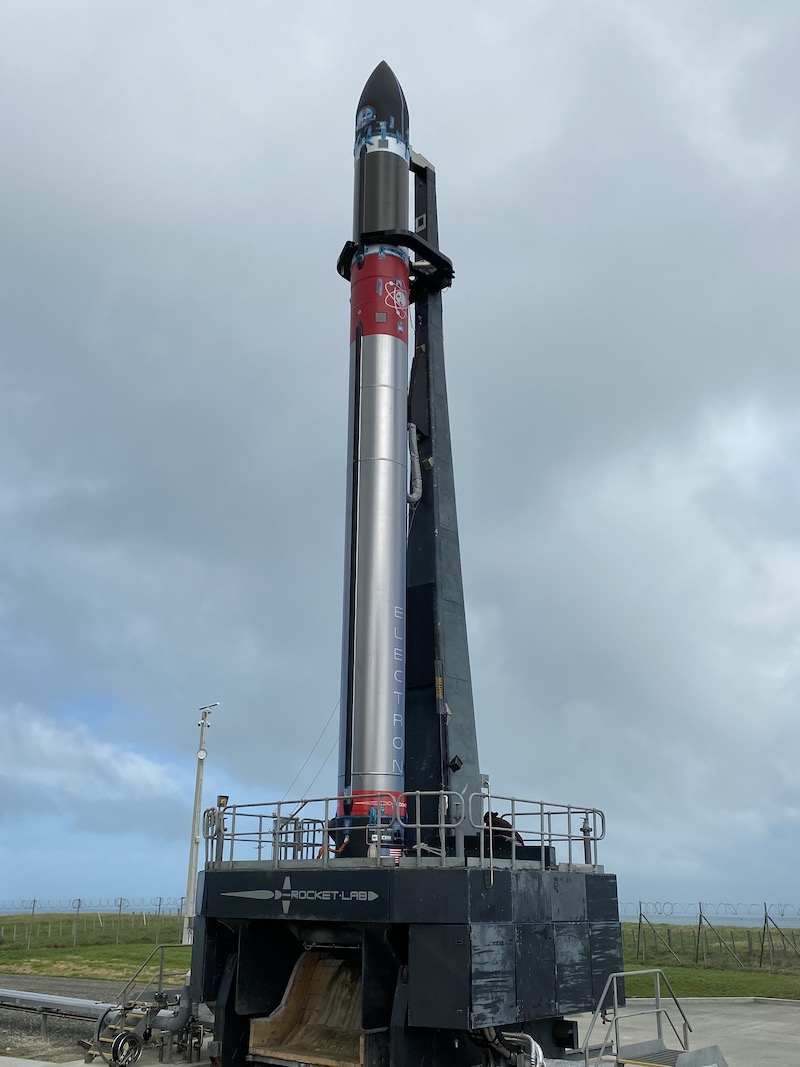EDITOR’S NOTE: Updated Saturday with delay until Monday.

Rocket Lab called off the planned launch and recovery of an Electron booster Friday, preferring to wait for better wind and cloud cover conditions a few days from now. The next opportunity to launch the mission from New Zealand is Monday.
“We don’t usually give mother nature quite so much power over launch timing, but for our first helicopter catch attempt we want to line up the best possible conditions to give us the highest chance of a successful catch,” Rocket Lab said Friday. “In time, we’ll narrow those bounds.”
The next launch opportunity is Monday during a window opening at 6:35 p.m. EDT (2235 GMT) and closing at 8:40 p.m. EDT (0040 GMT). The window opens at 10:35 a.m. local time in New Zealand on Tuesday.
The company said Saturday it would forego a launch attempt Sunday.
Rocket Lab has delayed the launch of its next mission nearly two weeks to wait for “ideal” weather conditions for liftoff and recovery of the rocket’s first stage booster, using a helicopter for a mid-air catch for the first time.
“Just like our weather tolerances for launch have increased over time, so will our tolerance for weather in the recovery zone,” Rocket Lab said. “For this first one though, we want to eliminate weather as a consideration so we can focus solely on the catch and supporting operations.
Thanks to relatively calm seas, Rocket Lab has changed its original plan and will use the helicopter — after catching the rocket — to deliver the 39-foot-tall (12-meter) carbon fiber booster stage onto a recovery vessel for transportation back to an onshore facility for inspections. The company originally planned for the helicopter to ferry the rocket back to shore with the booster suspended underneath it.
The Electron rocket will aim to deliver to orbit 34 small satellites from commercial operators Alba Orbital, Astrix Astronautics, Aurora Propulsion Technologies, E-Space, Unseenlabs, and Swarm Technologies.
While the rocket’s second stage and kick stage continue into orbit with the commercial payloads, the booster will arc to an apogee, or peak altitude, then re-enter the atmosphere for a scorching hot descent. Rocket Lab has added a new shiny thermal coating to the booster’s carbon fiber airframe to better protect it from the heating of re-entry.
Once back in the thick, low atmosphere the booster will deploy a parachute and a helicopter will swoop in to catch the rocket, aiming to snag a parachute line with a long boom.
The mission will mark a big leap forward for Rocket Lab’s booster reuse program, following three rocket recoveries from the Pacific Ocean. Those splashdowns under parachutes were experiments designed to gather data on the structural loads, heating, and deceleration the Electron booster encounters during re-entry and descent.
This will bring into the mix the final piece of Rocket Lab’s recovery concept. A customized Sikorsky S-92 helicopter will attempt to snare the carbon fiber booster stage suspended under a parachute around 170 miles (280 kilometers) off the coast of New Zealand.
Catching the booster in mid-air will prevent it from reaching the ocean, eliminating the risk of hardware corrosion or damage from splashdown in salt water, and easing refurbishment work required to make the rocket suitable to launch again.
The mid-air recovery also eliminates the need for the booster to carry a fuel reserve to accomplish a propulsive landing like SpaceX’s Falcon 9 booster, which sacrifices payload lift capability for the ability to return to Earth intact.
Rocket Lab wants to reuse Electron boosters, easing pressure on the company’s factories to sustain a higher launch rate. The Electron is sized to haul small payloads into orbit. Rocket Lab is working on a heavier next-generation rocket that will also be mostly reusable.
Email the author.
Follow Stephen Clark on Twitter: @StephenClark1.
